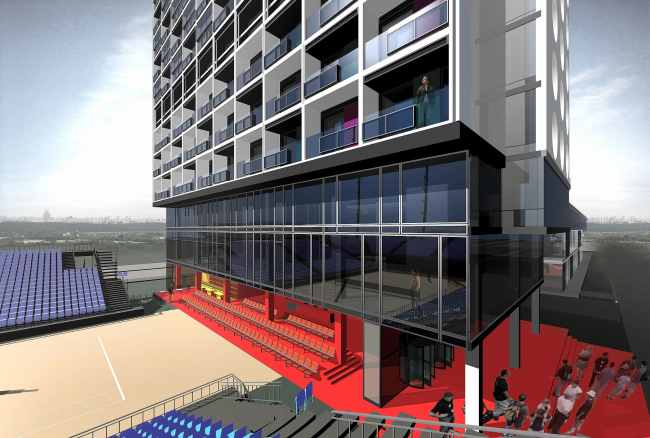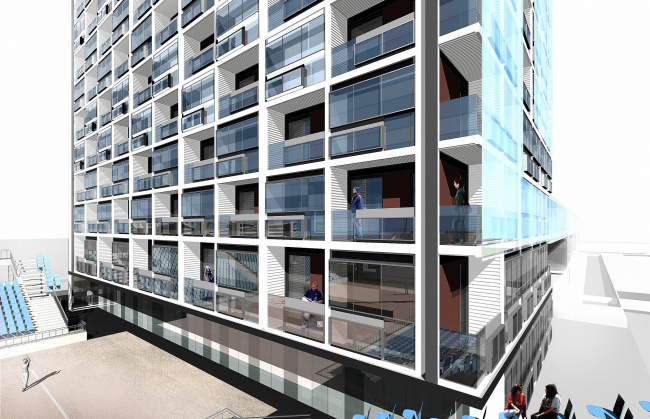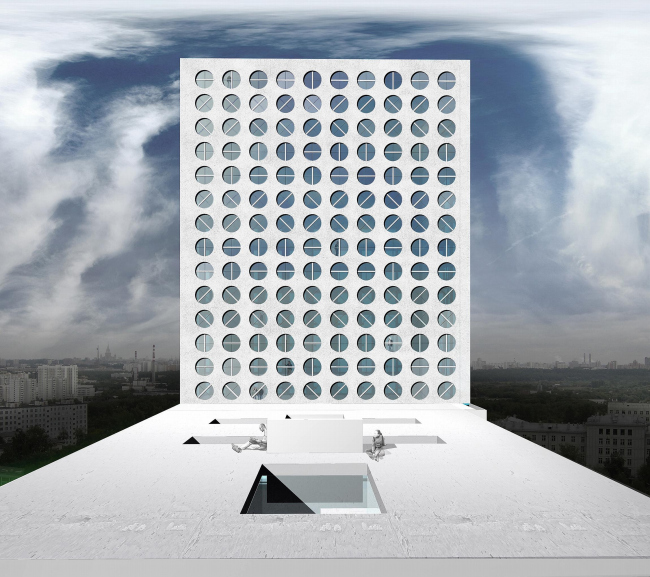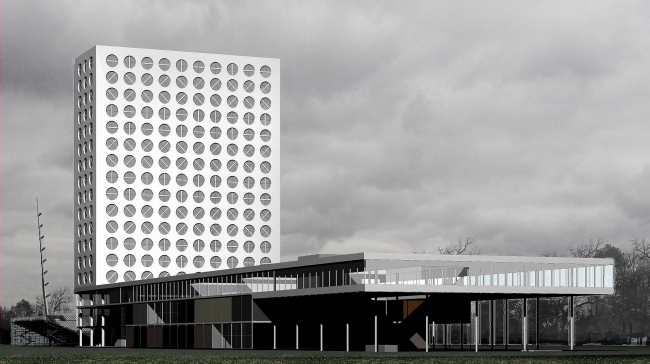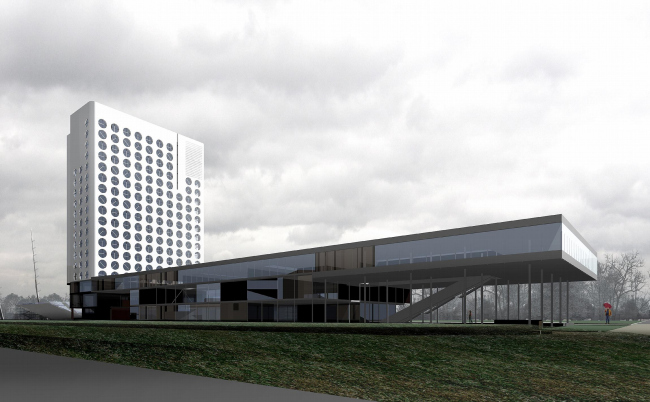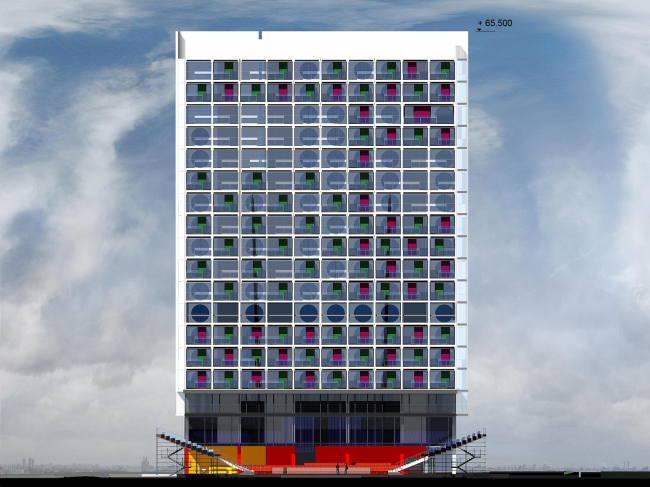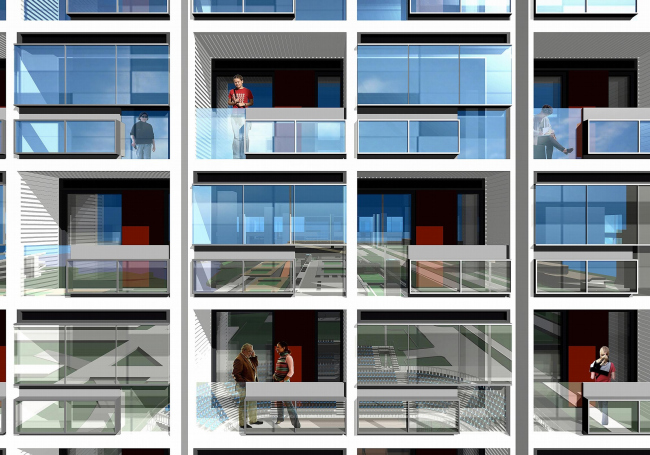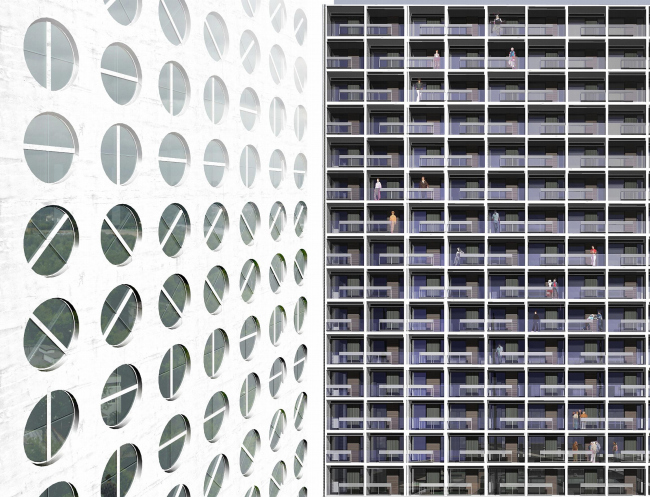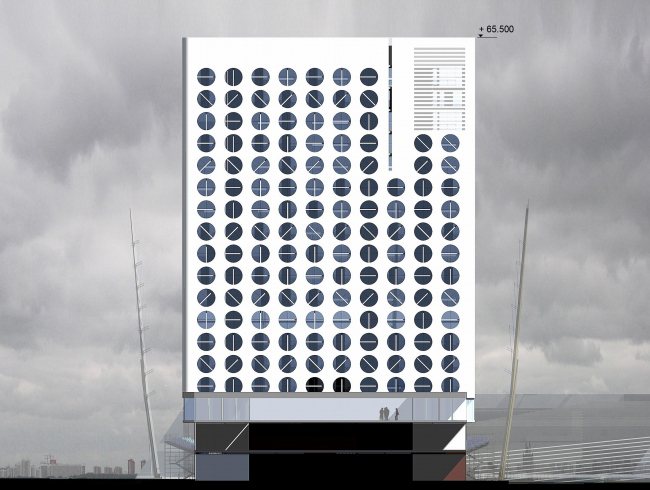|
Published on Archi.ru (https://archi.ru) |
|
| 28.11.2006 | |
|
Grandstand House |
|
|
Julia Tarabarina |
|
| Architect: | |
| Vladimir Plotkin | |
| Studio: | |
| Creative Union ‘Reserve’ | |
|
The client - Tennis Federation – has quite a huge area on the border of Leningrad highway and natural park, a green zone in front of Himkinskoe water basin. Vladimir Plotkin has been working for this project since the end of 1990’s and, as sometimes happen, projects start living their own life, if it takes a long time to finish work, life dependent on client and architect, but still their own. And now, it has turned that way – one project has gemmated, another one has joined, a new building has been added, as a result an original symbiosis has shaped - the house-tribune, which residents don’t have to leave their own balconies to watch competitions and trainings. Actually, it’s not a house, but a hotel. Its 18-storey building is an absolutely new part of the complex, it does not continue the initial design of the complex, it’s the core, the demonstration court, or the open stadium for tennis competitions joins it from the south; the grandstands can be dismantled – in other time it can be used for trainings. The demonstration court has initially been designed as a part of Tennis club, projected by Plotkin in 1998-1999; its site is located nearby. Places for the audience round the court from the three sides, and from the forth they go through the lower circle of the hotel viewing the stadium with continuous numbers of open loggias, forming a kind of ‘vertical tribune’. From the North side, another building is attached that was designed two years ago as a separate construction. Its volume stands 20 meters away from the hotel and is connected with it by the passage; it has been planned that here will be recreational and business places: shops, restaurant, offices. The hotel is the "newest" and the brightest part of the complex. Its 18-storeyed plate strongly cuts the horizontal through, although does try to spare the natural landscape, - the plate is turned to the highway by the narrow end face, wishing to reduce a visual barrier to the park. The southern facade-tribune, filled with deep loggias, is lined by Plotkin’s individual design. Parapets of balconies are glass, the whole volume seems transparent, delicate like crystal, having a little bit of Southern energy. NoneNoneNoneNoneNoneNoneNoneNoneNoneNone |
|

